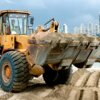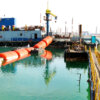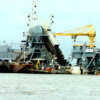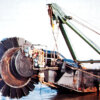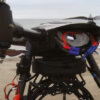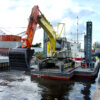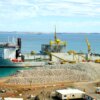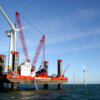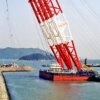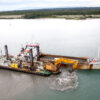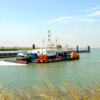Auxiliary equipment includes a wide variety of equipment that are not dredgers, but are integral to supporting dredging operations.
For the international dredging contractors, trailing suction hopper dredgers and cutter suction dredgers form the foundation of their dredging fleets. Practically speaking, however, dredging projects also require an ample number of floating auxiliary equipment. These include:
- multicats
- heavy lifting crane vessels
- workboats
- tenders
- towboats, tugboats
- stationary or self-propelled barges
- anchor pontoons, floating line pontoons
- booster stations
- crew boats
- survey vessels.
Auxiliary vessels can be crucial to the smooth functioning of a dredging operation. Dredgers often work 24/7 in a continuous operational mode, with changing crews on shifts. These crew members may need to be transported from ship to shore and vice versa. In addition, repairs to ships, including spare parts, fuel and lubricants or replacement of anchors of a cutter suction dredger may be executed by a workboat while the actual dredging is ongoing. Pontoons are used to anchor floating pipelines, which are subject to breakage or damage caused by rough seas and currents. Booster pontoons with pumps support pipelines discharging over long distances.
Other equipment often used during a dredging operation are:
Soil compaction equipment, such as:
- Wick drains
- Ball Joints
- Floating covers
- Linear pulling winches
- Land-based excavators.
Major dredging projects are complicated endeavours that require a broad range of equipment and trained personnel to operate them.



